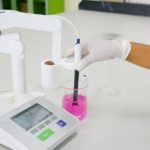In sectors that deal with liquids and fluids, getting accurate flow rates is vital in the processes to get high-quality products. Although the market is flooded with many types of flow meters, the user needs to know which type of flow meters are needed in applications. Failure to get proper meters may lead to poor flow readings and poor quality fluid and liquid products.
When looking for proper flow meters to use, the user also needs to consider the condition in which the fluid or liquid is measured. The condition refers to the pressure and the heat of the fluid. Flow meters come in many types meant to cater to various kinds of liquids and gases. There are flow meters that can measure liquids and fluids that have temperatures that go up to 600°C and above! Sectors that need high-temperature meters include those that deal with molten sugar, sulfur, and bitumen plants. The good and chemical sectors also use these types of meters.
So, how is a high-temperature meter used to measure very hot fluids and liquids? We are going to answer that in this article.
When measuring fluids with very high heat, heat is conserved to prevent the liquid or fluid from sticking to the inner surface of the channel. Failure to preserve heat may lead to damages in the pipeline or container used to hold the liquid or fluid. Checking the fluid temp is also vital to avoid disasters as even a slight change of temperature may cause damages.
Since flow meters are designed to measure the volume or rate of fluids in industries, most of them come into direct contact with the fluid or liquid. Flow meters are also made using various kinds of materials, and some of them can’t withstand high temp. Liquids that are very hot need unique flow meters for such conditions. High heat flow meters are used in sectors such as petrol refineries, power blocks, heat transfer circuits, solar fields, and atmospheric installations.
Type of Flow Meters used for High-Temperature Flow Rate
Currently, the ideal high-temperature flow meter that can measure very hot fluids is called an ultrasonic flow meter. Since it doesn’t come into contact with the fluid it measures, it uses sound waves to the fluid’s velocity. Once velocity is read, the user can then calculate the volumetric flow rate. Ultrasonic flow meters have many benefits which include high accuracy and low maintenance because it doesn’t have any moving parts. Ultrasonic signals can pass through solids. This makes it possible to mount transducers outside the pipe used to channel fluid flow. Since there isn’t any contact, non-invasive measurement will take place. By doing so, it gets rid of compatibility issues, pressure restrictions, and pressure loss.
Fluid’s acoustic properties are what influence ultrasonic flow meters. This affects the viscosity, density, and temperature. If advanced signaling is used with homogeneous fluids, issues such as noise and liquid chemical variations are prevented. Ultrasonic flow meters have two variations:
Transit Time
This type of high-temperature flow meter is used to measure the travel time of two simultaneous sound waves. One sound wave travels against the flow while the other sound wave travels in the flow direction. In zero flow, the sensor receives both waves. This means that there won’t be any transit time delay. It will take the downstream sensor a long time to get the upstream sensor as the liquid starts to flow. The flow volume and the velocity of liquid is proportional to the transit time difference. To function properly, transit time meters must be fitted in a full and closed piping system. It should also be free from bubbles or suspended solids.
Doppler-shift
The notion at which this type of high temperature flow meter operates is that the wavelength of sound which is moving away is longer than the approaching wavelength. However, the wavelengths are approaching from the same source. Sound waves that are emitted from the transducer reflect off of bubbles and return it back to the transducer. Process velocity equals the difference in wavelengths between the reflected signal and the transmitted signal.
This type of flow meter is used with liquids that contain bubbles, slurries, or gases that have particles that reflect sound. Using a level transmitter, they may be used as open channels. All these flow meters are used to monitor and measure flow rates in very hot liquids or conditions.
The Titan high-temperature flow meter is currently the highest elevated temperature Flowmeter. It operates at 200°C conditions and has an oval gear flowmeter. This type of flow meter is used for measuring F1 racing car engine oil in a testbed. Electromagnetic and Coriolis flowmeters can be adjusted to measure flow rates of high-temperature liquids.
Conclusion
When looking for flow meters that operate under extreme conditions such as high temperatures, it is always good to check first the user manual to ensure that they can withstand certain temperatures. Failure to use the right flow meter may lead to damages and serious injuries when processing hot liquids.







